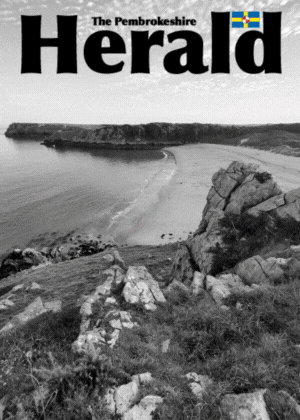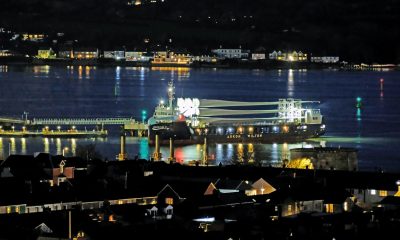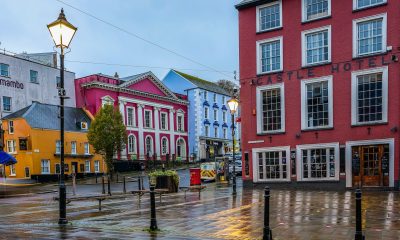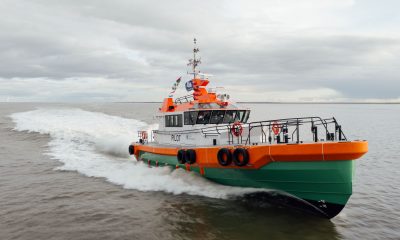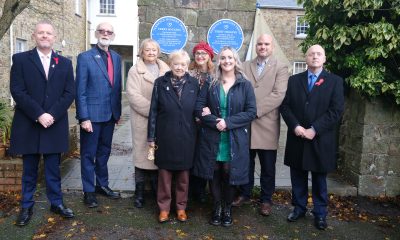News
Paramedics struggled for 46 minutes to try to save Natasha Bradbury
 PARAMEDICS struggled for 46 minutes to try and bring Natasha Bradbury back to life, a jury heard on this afternoon (Sept 2)
PARAMEDICS struggled for 46 minutes to try and bring Natasha Bradbury back to life, a jury heard on this afternoon (Sept 2)
They applied CPR (cardiopulmonary resuscitation) for more than twice the recommended length of time in the hope of saving her.
But, argued the prosecution at Swansea Crown Court, she had already been beaten to death by her on-off boyfriend Luke George Jones.
Jones, aged 33, a pipe welder, of Haven Drive, Milford Haven, denies murdering Miss Bradbury in the early hours of February 22 at her flat in Imperial Court, High Street, Haverfordwest.
The jury heard today from paramedic Alan Thomas, who was the first to arrive after Jones had dialled 999 and told ambulance control she was not breathing and that her body was already “freezing cold.”
The jury also heard for a second time a recording of the 15 minute call, during which Jones had difficulty explaining where he was.
Eventually, he had to find a letter received by Miss Bradbury and read the address to ambulance control.
Even then Mr Thomas and his colleague had difficulty identifying the location because Flat A was not marked on the front door and was in fact a four storey high building.
Mr Thomas said he had to knock “hard” on the door three times before Jones responded.
He said Jones appeared to be calm but he had a small cut on his left knee and both his hands were blood stained.
Mr Thomas said Jones was bare chested and wore just a pair of shorts. He told them, “It’s my girlfriend.” Then he said she had taken Valium, or too much Valium.
“I asked him where the patient was and he said upstairs, but he was reluctant to lead the way and I walked up ahead of him,” said Mr Thomas.
As the paramedics made their way up the flights of stairs they noticed blood smears and various items strewn on the stairs, including a cabinet.
Inside the lounge on the third floor, he said, there was “glass all over the floor” and he could see that the screen of a television set had been broken.
Miss Bradbury was lying on her back and was very pale. There was blood around her mouth and dried blood inside her nostrils.
And the fingers of her left hand appeared to be misshaped as if they had been fractured.
“There were no obvious signs of life, no pulse,” he added.
A second ambulance crew arrived and Jones was asked to wait outside the lounge.
The paramedics tried a combination of CPR and drugs for 46 minutes but without gaining any response from Miss Bradbury, who was just five feet two inches tall and weighed less than seven stones.
“We decided that she had died. We all agreed she had passed away and it was pointless carrying on,” he added.
Cross examined by Chris Clee QC, the barrister leading Jones’ defence team, Mr Thomas said he was aware that CPR was a vigorous measure that could itself cause injury including fractures to the ribs and even to the breast bone.
But he had 20 years experience as a paramedic and was aware of the dangers.
The prosecution claim that Jones beat Miss Bradbury to death shortly after finding out she had slept with another man.
After his arrest Jones gave police prepared statements in which he said Miss Bradbury had caused the injuries herself by falling down.
The trial continues.
Crime
Prosecution delivers powerful closing speech in Christopher Phillips trial

Jury expected to retire shortly in Swansea Crown Court baby abuse case
THE TRIAL of Christopher Phillips, accused of inflicting catastrophic injuries on a 10-week-old baby in Haverfordwest, moved into its final stages today (Dec 5) as the last evidence was heard and the prosecution delivered a forceful closing speech at Swansea Crown Court.

Phillips, 34, of Kiln Park in Burton, is charged with causing serious physical and sexual harm to Baby C in January 2021. The infant was taken by ambulance to Glangwili Hospital in the early hours of January 24 after suffering life-threatening internal injuries.
The baby’s mother faces separate charges of allowing serious physical harm and child cruelty for allegedly failing to protect her child.
Final evidence presented
The court resumed at 11:09am, when the prosecution submitted its final exhibit: a detailed timeline reconstructed from Phillips’ mobile phone data, charting his visits to the mother’s flat in Haverfordwest.
Prosecutor Caroline Rees KC highlighted the distances between Phillips’ home, the mother’s address and Glangwili Hospital, telling the jury that the timings were central to understanding the sequence of events that night.
This concluded the evidential phase of the trial.
Judge issues legal directions
Late this morning (Friday, Dec 5) Judge Paul Thomas KC delivered his directions to the jury, outlining the legal tests required for convictions against both Phillips and the child’s mother. He reminded jurors to consider each charge separately and to apply the law only to the evidence they had heard.
Prosecution closing speech
In her closing address at early this afternoon, Rees KC told the jury that 10-week-old Baby C had been a “happy little baby” who showed “no signs of distress” in a video recorded by his father on January 23, 2021.
She said that within hours, by the early morning of January 24, the infant was in hospital with what she described as a “gaping tear in his anus”.
Rees KC argued that the evidence of who caused the injuries “points in one way – towards Christopher Phillips”.
Turning to the baby’s mother, she said the prosecution’s case was that she was “not without blame”, telling the jury that the mother had “failed in her duty to keep her baby safe”.
“She at the very least ought to have realised that her baby was at serious risk from the man she brought into her home,” Rees KC said. “She didn’t take any steps to keep that baby safe. She prioritised Christopher Phillips over her own child.”
Jury expected to retire
No defence closing speech was delivered today, that will be on Monday.
No further evidence is scheduled.
The jury is expected to retire early next week to begin its deliberations.
The case continues at Swansea Crown Court.
Farming
FUW urges government action as plunging dairy prices threaten family farms

THE FARMER’s UNION OF WALES has sounded the alarm over a sharp and sustained collapse in dairy prices, warning that the situation is placing intolerable pressure on family farms already grappling with regulatory change, rising costs and wider economic uncertainty.
The Union convened an emergency meeting of its Animal Health and Dairy Committee last week to assess the scale of the crisis. Representatives from across Wales reported widespread anxiety, with many members seeing milk prices fall dramatically through the autumn. Processors are now signalling further cuts in early 2026, while commodity markets offer little sign of stability heading into spring.
Farmers, fearful of jeopardising commercial relationships, have approached the FUW confidentially to express grave concern about projected milk payments for the coming months. Many say the offers being made will fall far below the cost of production.
Average milk prices are forecast at just 30–35 pence per litre, against estimated production costs of 39–44 pence per litre (Kite Consulting). On current trajectories, the FUW warns a typical Welsh dairy farm could lose thousands of pounds per month for as long as the downturn persists.
Following its committee meeting, the Union raised the matter directly with Deputy First Minister Huw Irranca-Davies MS during talks in Cardiff on Wednesday, December 3. Officials stressed the immediate threat facing family-run dairy farms and called for urgent consideration of government support to prevent long-term damage to the sector.
Gerwyn Williams, Chair of the FUW Animal Health and Dairy Committee, said the pace of the price crash was “unprecedented”.
“Farmers are facing an impossible situation where input costs remain high while the value of their product plummets. The viability of many family farms is now at serious risk. We need immediate assurances that this crisis is being treated with the urgency it deserves.
“Some can weather a short storm, but rumours that this could continue into summer 2026 will see businesses shut. These modest family farms have already invested heavily to meet regulatory requirements. Cuts on this scale will severely impact their ability to service repayments.”
FUW Deputy President Dai Miles warned that the consequences extend far beyond farm gates.
“Dairy farming underpins thousands of jobs in Wales and is central to the economic, social and environmental fabric of rural communities. When prices fall this sharply, it isn’t just farmers who suffer — local businesses, services and entire communities feel the impact.
“We have made it clear to the Deputy First Minister that government must work with the industry to provide immediate stability and a long-term resilience plan.”
The FUW says it will continue to work with the Welsh Government, processors and supply-chain partners to seek solutions and secure fair, sustainable prices for producers.
Community
Haverfordwest’s first memory tree brings community together this Christmas

Spud Box is delighted to launch a brand-new festive initiative for the people of Pembrokeshire – Haverfordwest’s first Memory Tree, now open to the public at our premises.
The idea, inspired by Drew from The Big Pembs Panto, invites members of the community to write and hang personal messages on the tree. These can be tributes to loved ones, cherished memories, or simple Christmas wishes.

The project has been created to give people a meaningful way to connect during the festive season. All materials – including paper, plastic pockets and ribbon – are provided free of charge. Visitors are also welcome to enjoy complimentary hot drinks, kindly supplied by Connect: Pembrokeshire, along with mince pies donated by Brakes.
Anyone who prefers to create their message at home can bring it in, and the team will be happy to help attach it to the tree.
Donations are being encouraged in support of Sandy Bear Children’s Bereavement Charity, making the Memory Tree both a reflective and charitable community event.
The tree itself looks spectacular thanks to Sion from DSR Batteries, who supplied the lighting. The project has also received generous support from Marty at Sandy Bear Children’s Bereavement Charity and Pure West Radio. Spud Box welcomes other community groups or organisations who wish to get involved.
-

 Crime3 days ago
Crime3 days agoDefendant denies using Sudocrem-covered finger to assault two-month-old baby
-

 News2 days ago
News2 days agoBaby C trial: Mother breaks down in tears in the witness box
-
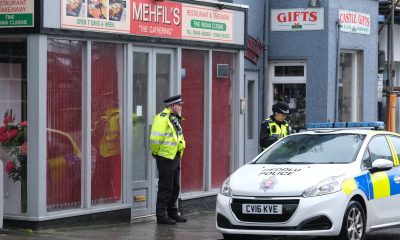
 Crime2 days ago
Crime2 days agoPembroke rape investigation dropped – one suspect now facing deportation
-

 Crime7 days ago
Crime7 days agoMan denies causing baby’s injuries as police interviews read to jury
-

 Crime3 days ago
Crime3 days agoLifeboat crew member forced to stand down after being assaulted at Milford pub
-

 Crime3 days ago
Crime3 days agoDefendant denies causing injuries to two-month-old baby
-
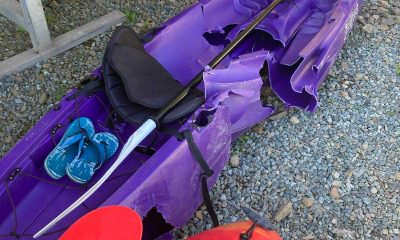
 Crime3 days ago
Crime3 days agoPembrokeshire haven master admits endangering life after speedboat collision
-
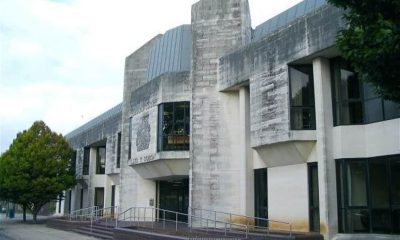
 Crime1 day ago
Crime1 day agoMother admits “terrible idea” to let new partner change her baby’s nappies alone










